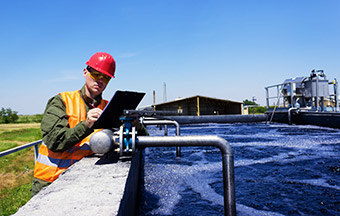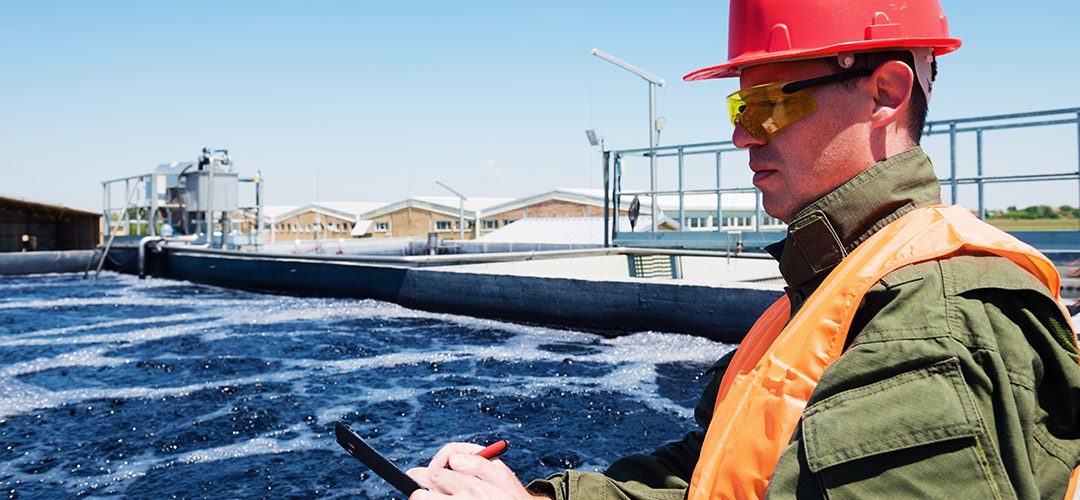How Modern Wastewater Treatment Solutions Are Simplifying The Process And Saving Money
Traditional wastewater treatment methods require additional products to supplement or counteract adverse results from other parts of the “solution” process. Save the time, effort and cost of piling on extra products like polymers and other chemicals by treating wastewater the right way the first time with Neo WaterFX300 (formerly RE300).
The topic of managing the challenge of wet wastewater sludge has such high importance to the cost and operations of wastewater treatment plants that we are covering it in two related blog articles. In this article, we’ll discuss the costly use of polymer chemistry to dry and consolidate wastewater sludge. In the next article, we’ll cover the sludge dewatering process in general.
The Issue With Polymers – Treating The Symptoms Instead Of The Root Causes
As with many products that have found their way into the processes of wastewater treatment, the need for expensive polymers is being reduced as wastewater treatment plants shift to more innovative, efficient and cost-effective solutions. Polymer sales people continue to sell polymer products into the wastewater treatment market because the market is so large and because those are the products they have available to sell. However, savvy plant operators increasingly understand that polymer products are treating the symptoms instead of the root causes of wastewater treatment problems.

Polymer chemistry can address many important challenges in industrial applications, but the process of combining, producing and deploying polymer products is very complex, expensive and time-consuming. Reducing polymer usage saves wastewater treatment plants precious time, money and labor. The use of polymer products is needed in wastewater treatment when the traditional iron-based (“ferric”) and aluminum-based compounds are used to deal with the core problem of phosphorus reduction. We discussed that issue in a previous article about managing phosphorus more efficiently. Ferric- and aluminum-based coagulants are effective in reducing phosphorus levels in wastewater, but they enable other problems that must be addressed with additional products like polymers and related labor-intensive processes.
One of the ways that a growing number of wastewater plant operators have found to make major improvements in their operations is to replace the ferric- and aluminum-based coagulants with compounds of cerium and lanthanum, two of the seventeen “rare earth” elements in the periodic table. Despite the name for this category of elements, cerium and lanthanum are abundantly available to solve problems like wastewater management. Even better, both elements are heavier and denser than iron and aluminum, which makes them ideally suited to more efficient wastewater settling and coagulation. They are the active ingredients in Neo Water Treatment’s Neo WaterFX300 (formerly RE300) chemical water-treatment coagulant, which is being used more commonly in plants whose operators are learning how to improve wastewater treatment more efficiently and within ever-tightening budgets and simultaneously constrictive permit constraints.
The Problem – The High Cost Of Wet Sludge
In wastewater treatment plants, polymers are primarily used to help manage the process of drying and consolidating sludge. Sludge created during the wastewater treatment process is typically a mixture of 5-10% waste material and 90-95% water. Moving and disposing of water-heavy sludge, often called “biosolids” or “solids” is usually one of the largest expenses for wastewater treatment plants along with labor and energy costs. That’s because even completely clean water weighs 8.3 pounds per gallon, and a 90-95% water sludge mixture is very expensive to move, process and dispose.
The dryer and more condensed the sludge solids, the cheaper and more efficient they are to move through treatment plant processes and to dispose of. Wastewater treatment plants primarily use polymers in the sludge drying process to help congeal small pieces of biosolids into larger ones. That is because the use of ferric- and aluminum-based compounds leaves biosolids fragmented and water-laden.
Replacing ferric- and aluminum-based coagulants with Neo’s Neo WaterFX300 (formerly RE300) enhances the sludge management process and reduces the need for expensive polymers in two important ways.
Enhancement 1 – Potency of Neo WaterFX300 (formerly RE300) Reduces Sludge Volume And Polymer Requirements
Because the rare earth chemistry of Neo WaterFX300 (formerly RE300) is more potent and effective than ferric- or aluminum-based compounds, less is required to coagulate the same quantity of biosolids in wastewater. There are always a set amount of biosolids produced in wastewater without the application of chemical additives. On average, this tends to be about two (2) pounds of solids per 1,000 gallons of flow. To settle that quantity of solids, some amount of ferric- or aluminum compound is needed. However, more of these compounds are often added to also reduce phosphorus levels to the required targets. The addition of these coagulants generates additional solids and adds to the total amount of solids present in the water. Thus, using ferric- or aluminum-based compounds to settle solids and reduce phosphorus levels produces a cumulative effect on the quantity of sludge and adds to the sludge management problem.
On the contrary, when a wastewater treatment plant switches from ferric- or aluminum-based coagulants to Neo’s more efficient rare earth-based Neo WaterFX300 (formerly RE300), the addition to the base sludge is reduced, which reduces the overall quantity of sludge. That reduction decreases the overall quantity of polymers needed to treat the sludge. Less sludge and less polymer products needed saves time, labor, energy, wear and tear on plant infrastructure, sludge transport and disposal. Most importantly, it can help save money.
Enhancement 2 – Use of Neo WaterFX300 (formerly RE300) Produces More Dense and Drier Sludge, Reduced Polymers
All water is not equal in the treatment of wastewater. Results of two groundbreaking wastewater treatment studies conducted by Virginia Tech and the University of Technology in Sydney, Australia demonstrated that the rare earth chemistry in Neo’s Neo WaterFX300 (formerly RE300) takes advantages of these differences.
Relevant to wastewater sludge processing, the university studies identified two important types of water with different properties: “free water” and “bound water.” Free water is water not associated with solid particles and is separated easily by simple gravitational settling or centrifuges. Bound water is water that is trapped inside floc structures or cells. Only a small amount of this water can be removed by mechanical dewatering devices such as vacuum filters or centrifuges. According to the study, bound water content is one of the major limiting factors affecting sludge dewatering efficiency because removing it requires larger amounts of energy.
Two key findings were revealed by the university studies:
-
- When cerium trichloride (CeCl3), Neo WaterFX300’s primary ingredient, was used instead of ferric- or aluminum-based coagulants, less sludge was produced in the settling process.
- In contrast to iron- and aluminum-based compounds, Neo WaterFX300’s cerium trichloride ions interact with water in a manner that allows biosolid cells to hold on to less bound water. Water is also more easily removed from the floc structures formed during Neo WaterFX300 (formerly RE300) treatment.
In summary, less sludge is produced using Neo WaterFX300 (formerly RE300) for sludge coagulation, and the sludge that is formed holds onto less bound water, which makes dewatering less costly and less complicated.
Because Neo WaterFX300 (formerly RE300) can be dosed at any stage of the wastewater treatment process – even as early as the primary or secondary clarifiers – Neo’s rare earth chemistry naturally creates a better settling solids coagulation environment before the sludge even gets to the digester or to the belt filter presses. Neo’s Neo WaterFX300 (formerly RE300) results in drier biosolids as a natural part of the process. At the bottom of the clarifier tanks, Neo WaterFX300 (formerly RE300) creates a thicker, denser sludge that contains less water. That reduces the need required quantities of expensive polymer chemistry, which helps to reduce costs.
Bottom Line – Less Water, Drier Sludge, Less Polymers, Lower Costs, Healthier Plant
Neo’s Neo WaterFX300 (formerly RE300) product delivers benefits on multiple levels to wastewater treatment plants:
-
-
- Less sludge is produced, which reduces volumes needed to transfer to landfills or disposal sites;
- The sludge that is produced is drier and denser with less water to remove;
- Reduced sludge volumes also mean less pumping into anaerobic digester tanks;
- Drier and denser sludge also requires lower quantities of expensive polymers and less work by the belt filter press, centrifuge or screw press processes.
-
Utilizing Neo’s Neo WaterFX300 (formerly RE300) treats wastewater the right way, the first time! Rare earth chemistry from Neo can save wastewater plants and their operators time, money, labor, excess wear and tear on plant equipment and infrastructure, and reduced disposal effort, in addition to reduced need for expensive chemicals and polymers.
For more information on how you can improve your wastewater plant’s operation, contact Neo Water Treatment at (303) 843-8065; or email us here.
Signup for occasional email updates at https://neowatertreatment.com/contact/get-updates/.



